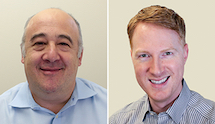 Ken Deutsch (L) and Adam Pawluk co-authored this article. |
It was a familiar refrain for many of us after November 2016: “We’re living in a bubble! We don’t understand the people!” Since that time, we all see this same story repeated. Confirmation bias is more powerful than any one of us realizes. Social media just tells us what we want to hear. Our news media of choice caters to narrowly defined groups and views.
Likely, every agency has been challenging itself to get outside of this bubble. We’re beginning to realize that “big data,” for all its faults, also presents an opportunity to get outside our own perspectives and better understand the world as it really is.
Few issues in healthcare represent this problem of self-selecting information as clearly as the debate around vaccines. For groups on both sides, the view is 100 percent clear: vaccines are either a miracle of modern medicine or a harmful hoax. But even this level of understanding lacks the depth needed to solve the problem.
JPA has developed a tool we call Gretel, the only collection of health conversation data that cross-references advocacy, news and social media and online influencers. It’s a powerful engine that allows us to see across a universe of voices to zero in on what’s really going on, and it’s often full of surprises that we follow like breadcrumbs.
|
|
When we dig into the data in Gretel on the vaccine conversation, here’s what we see: the medical establishment, with all its scientific wisdom, spouts data points, study results and clinical facts. They make their case with MDs and PhDs and rely on traditional medical organizations and traditional media sources to carry their message.
On the other side of the issue, anti-vaxxers lay into the dangers of big pharma, the harm in our broken medical system, the problems with chemicals and putting bad things in our bodies. They make the case with moms and kids and regular folks who’ve allegedly been harmed by a medical hoax. News and social media focused on popular culture tend to pick up this message and spread the word. There’s a dash of pseudo-science thrown in, but the focus is on people who believe they’ve been affected and subsequently marginalized by mainstream beliefs.
In between these two camps exists a large, moveable middle of mainstream popular culture. Whose arguments do you think are more compelling to more of these people in this middle? They’re not enticed by data. They’re not motivated by scientists. They’re moved to action by emotional appeals that feed into an increasing sense that our system is broken, that they’re pawns in a game of industry profits.
The expertise fails to land. The scientists and so-called “elites” talk only to themselves, and the people on the side of what’s best for public health lose messaging ground again and again to the anti-vaccine movement. A premise that seems ridiculous to many continues to gain steam.
It’s possible that recent outbreaks will lead to a reset in the discussion. However, instead of focusing just on studies and data and scientific expertise, we should be talking more about how our systems are designed to protect us, how small actions can save lives, and the real fears parents have about losing their children to highly contagious diseases.
Conversation taking shape
It’s obvious that different health issues require different communications approaches. We now, however, can literally see the shape of a conversation, where the bubbles are and where they’re not, to determine how best to reach specific audiences.
For example, the oncology conversation takes a very different shape from the highly-fragmented vaccine debate. In oncology, we see very little bubble-think, because people are highly motivated to share as much information as possible with each other. We see this in the data, and we see this manifest itself across the oncology landscape. In a recent online discussion about lung cancer, patients, oncologists, radiologists and pathologists were all engaged, participating equally, and sharing knowledge with each other. When does that ever happen?
But we also can see distinctions that the professionals themselves may not even realize. While arguably, it has been said that oncologists in many ways are closer to their patients and the patient experience than other types of specialists. Oncologists may group themselves by their specialties, but we see another difference between groups of oncologists known as medical oncologists and surgical oncologists.
The surgical oncologists—accustomed to dealing with patients in an operating room—are less connected to patient groups and influencers. On the other hand, medical oncologists—face-to-face every day with patients—are highly engaged with these groups. Depending on the communications need, we must reach these two groups in very different ways.
By mapping the relationships between the top influencers on an issue and then grouping them together based on what sources they pay attention to, we can generate an understanding of the conversation structure. As we see in these examples, different audiences connect in different ways around issues, with very real implications for how we design an effective communications program.
Social becomes measuring stick
Social media provides a powerful channel to reach audiences, but it also offers a new avenue to understand the media landscape and to decide not just which outlet, but which media platforms work best to engage specific audiences.
In the old days, we could only measure readership of a media outlet. We were lucky to be able to perform surveys or focus groups to better understand which outlets and messages were landing with specific audiences. We didn’t have the trove of public data we do today, documenting what content drives which conversations among which audiences.
Our experience reaching emergency room physicians is a great example of unexpected insights hiding beneath the surface. In looking at how to best reach them, we were surprised to find they were more likely to cite blogs than medical trade publications in sharing information with each other. For the rest of us, blogs peaked a few years ago, but with emergency room doctors they’re continuing to thrive.
Taking a closer look, we saw these physicians love to share stories about odd things that happen in the emergency room. If you want to reach an emergency room physician, you’ll hit a home run if you can tie your cause to an unusual patient case and get it covered in a blog.
It’s exciting to realize how much better we can understand our audiences at both a macro level and on an individual level, thanks to the power of big data and data visualization. As communicators, we have tools today that help us fight confirmation bias. Tools that prevent social media from telling us just what we want to hear. Tools that allow us to take a broad look across a universe of conversation and cater to narrowly defined groups and views.
It takes constant effort, invention and re-invention as communicators, but we’re better than ever at understanding the world as it really is, and how to make a difference where it matters most.
***
Ken Deutsch is Head of Analytics & Research and Adam Pawluk is Senior Vice President at JPA Health Communications.

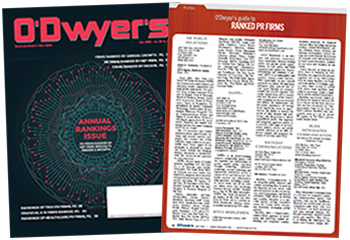

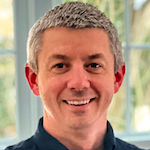 Real Chemistry has hired Wunderman Thompson’s Andy Johnson as chief information officer.
Real Chemistry has hired Wunderman Thompson’s Andy Johnson as chief information officer.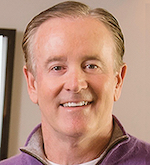 The communications industry is often so caught up in the role of measurement that it loses sight of arguably the most important component in the measurement mix—the client’s bottom line.
The communications industry is often so caught up in the role of measurement that it loses sight of arguably the most important component in the measurement mix—the client’s bottom line. Imre has recruited Atul Sharma, who was VP-analytics at Porter Novelli, for the senior VP-intelligence slot.
Imre has recruited Atul Sharma, who was VP-analytics at Porter Novelli, for the senior VP-intelligence slot. Some of the ways in which analytics and artificial intelligence are transforming today’s communications landscape.
Some of the ways in which analytics and artificial intelligence are transforming today’s communications landscape.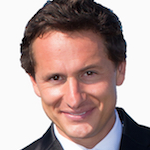 Edelman has launched a disinformation offering to help clients combat deceptive and false material with fact-based communications.
Edelman has launched a disinformation offering to help clients combat deceptive and false material with fact-based communications.


 Have a comment? Send it to
Have a comment? Send it to 
No comments have been submitted for this story yet.